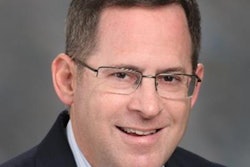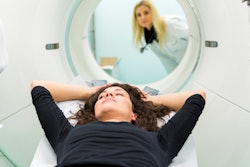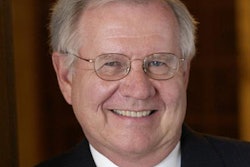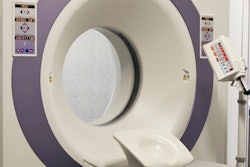
WASHINGTON, DC - A quality improvement system that audits radiology reports and provides feedback to residents helped them lower error rates while also improving workflow and reducing delayed payments, according to a study presented on Wednesday at the American Roentgen Ray Society (ARRS) meeting.
For the staff at the Medical University of South Carolina (MUSC), a series of educational lectures and monthly email reports to facility and residents that detailed common errors proved beneficial in significantly reducing the number of erroneous reports.
"We found that residents became more accurate, thoughtful, and accountable in reporting," said lead author Dr. Samuel Volin, a radiology resident at MUSC. "That also should serve them well when they potentially join a high-volume practice where accuracy and efficiency are paramount."
Internal review
The look into radiology reports began with an internal review at MUSC that showed the number of amended reports had increased to more than 100 per month, on average. The situation caused delays in patient care and payment for the facility's services.
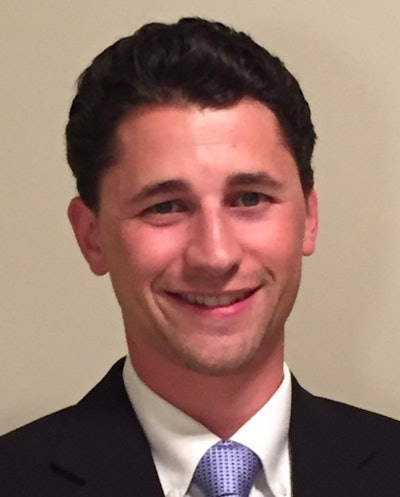 Dr. Samuel Volin from MUSC.
Dr. Samuel Volin from MUSC.At issue was the "technique" section of a radiology report, which describes how a study was performed: which body part was imaged, the modality used, any contrast agents used, and any image postprocessing, among other details. At MUSC, a resident can access a template that automatically fills in the technique section. But if a report is started before an imaging study is completed or if images are sent prematurely, those actions will affect the number of views, the use of contrast, and postprocessing techniques, Volin said.
"When there is a discrepancy between what we report in the technique section and what was actually performed, an addendum needs to be generated," he told ARRS 2018 attendees. "This leads to increased work and it hinders workflow. When we looked at this issue [at MUSC], we saw that we were generating hundreds of addendums per month."
The researchers reviewed the total number of studies performed per month and the total number of reports that required an addendum over a six-month period from October 2016 to March 2017. On average, 26,604 studies were performed monthly, with 148 reports (0.56%) requiring an addendum. The data were further divided by modality, the type of error, and the resident responsible for the inaccuracy.
"We set a modest goal to decrease this percentage to below 0.5% per month [by] increasing awareness and attention to detail," Volin said.
Correction campaign
The program to improve resident performance began in April 2017 with a presentation at one of MUSC's noon conferences. At that time, the researchers highlighted their findings on the number of monthly radiology studies and amended reports, common errors, and the departments that were generating the most addenda.
The billing and business departments became involved in the effort as well, hosting another noon lecture about the business side of radiology and reinforcing how monthly addenda and erroneous reports can delay payments.
In addition, the number of errors made by each resident was sent to the program director for use as a metric in yearly performance reports. Individual residents were notified when they generated a report that required an addendum. Previously, only the program director and billing department knew of the errors.
"Oftentimes, residents were completely unaware that they had created an error that resulted in an addendum," Volin said.
Individual resident performance was anonymized and the results were distributed through a monthly summary so the residents could compare their error numbers with those of their peers.
Forward progress
To assess the changes in the addendum rate after bringing residents up to speed on the situation, the researchers looked at the seven-month period from April to October 2017. During that time, MUSC averaged 24,086 studies per month, and the average number of monthly amended reports decreased to 97. The revised error rate of 0.40% was a statistically significant decline (p = 0.0367), compared with the rate of 0.56% in the previous six months.
| Percentage of reports requiring an addendum | |
| Before intervention | |
| October 2016 | 0.59% |
| November 2016 | 0.59% |
| December 2016 | 0.50% |
| January 2017 | 0.52% |
| February 2017 | 0.56% |
| March 2017 | 0.59% |
| After intervention | |
| April 2017 | 0.47% |
| May 2017 | 0.52% |
| June 2017 | 0.47% |
| July 2017 | 0.38% |
| August 2017 | 0.40% |
| September 2017 | 0.27% |
| October 2017 | 0.29% |
During his ARRS presentation, Volin cited results from June 2017 as being representative of the initiative's success. There were 25,081 studies performed that month and 117 amended reports, for an error rate of 0.47%. Mistakes included 26 reports (22%) with the wrong body part and 25 (21%) that did not include information on whether contrast was used.
The musculoskeletal group had the highest number of problem reports (41, 35%), followed by body imaging (28, 21%) and neurology (21, 18%). Almost half of the issues involved CT reports (57, 49%), with x-ray reports (28, 24%) as the next most frequent.
Better together
Volin said the progress in reducing monthly addenda is due to the coordinated efforts of several departments within MUSC.
"This is a good example of teamwork and cooperation between residents, faculty, and the billing department, all working toward a common goal to result in a significant improvement for our department," he added.
Since this research was completed, MUSC's radiology department switched to a voice recognition/dictation software application that automatically populates the report template, including the technique section.
"This has resulted in an improvement, but errors still occur if the report is generated before the study is complete," Volin told AuntMinnie.com. "The system will not generate a report template if the study is not complete, which requires residents to manually select a template, similar to the previous system. For the most part, the dictation system populates the correct template."
In the meantime, MUSC will continue to keep an eye on dictation errors, he added, and "make efforts to ensure they remain low and, hopefully, continue to decrease."




